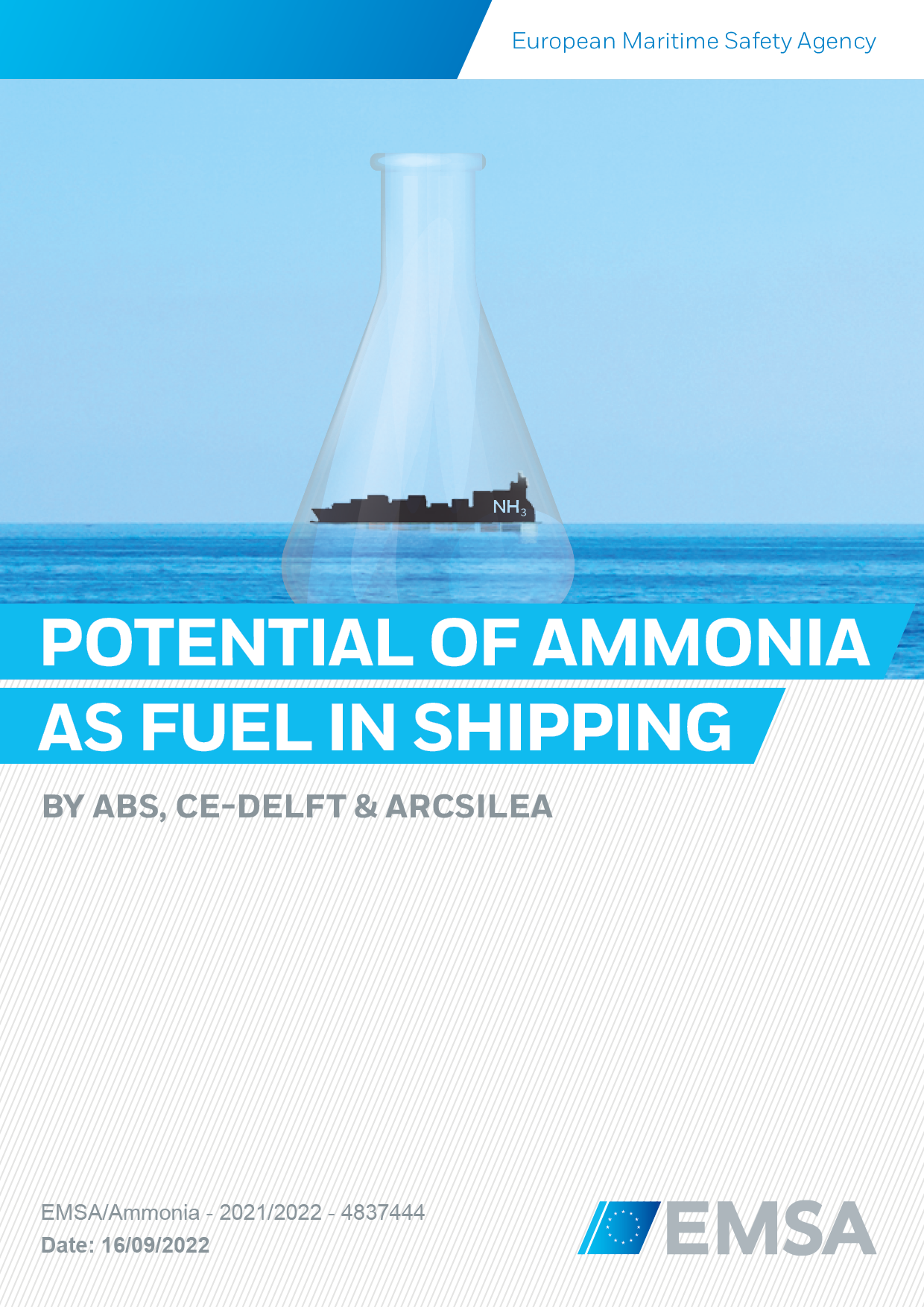Potential of Ammonia as Fuel in Shipping [updated]
Date

Among the broad spectrum of technologies and fuel solutions ship designers, builders, owners and operators, anhydrous ammonia (NH3) has been identified as a potential long-term fuel that could enter the market relatively quickly and offer a zero, or a near-zero, carbon solution (on a tank-to-wake basis and in some cases on a well-to-wake basis) irrespective of the origin of the fuel.
While there is little recent marine experience with using ammonia as a fuel – and some of the key machinery technologies (such as engines) are under development – extensive land-based experience with the production and use of ammonia for the petrochemical and fertiliser industries forms a sound basis for increasing its use as a marine fuel. Experience with the carriage of ammonia in liquefied-gas carriers – and the specific requirements for storage, distribution, personal protective equipment (PPE), etc. in the International Code of the Construction and Equipment of Ships Carrying Liquefied Gases in Bulk (IGC Code) – provide some of the statutory requirements to guide its application on ammonia-fuelled ships.
However, the toxicity challenges and related risks are significant and, while manageable, they will add complexity to ship designs (compared to those for conventional and other low-flashpoint fuels and gases) and will potentially limit the ships for which it is a suitable fuel. Ammonia ultimately may prove to be a more appropriate solution for deep-sea cargo ships rather than short-sea, passenger or inland waterway craft.
By examining the current production capacity for ammonia, the existing regulatory landscape, fuel storage options, supply and power generation technologies – along with techno-economic analyses and risk-based case studies – this study has identified the key challenges for adopting ammonia as fuel. It has also identified a number of advantages that ammonia would have over other low-flashpoint fuels or gases, technology and regulatory gaps that would prevent its immediate application, and some incentives that would encourage its adoption.
|
EMSA released studies on the use of Ammonia and Biofuels in shipping during the last quarter of 2022. Since that time, a political agreement to extend the EU Emissions Trading Scheme (ETS) to include maritime transport was reached at the end of 2022 and adopted on May 16, 2023. Under the revised ETS Directive, ship operators will be required to monitor their equivalent CO2 emissions from 2024 and to surrender corresponding allowances under a phased in scheme. These subsequent associated carbon costs were not included in the initial studies released in 2022. The studies have now been updated to reflect the additional carbon costs in the cost analysis section of the studies. (26.09.2023) |
Files
-
Categories
-
Tags
